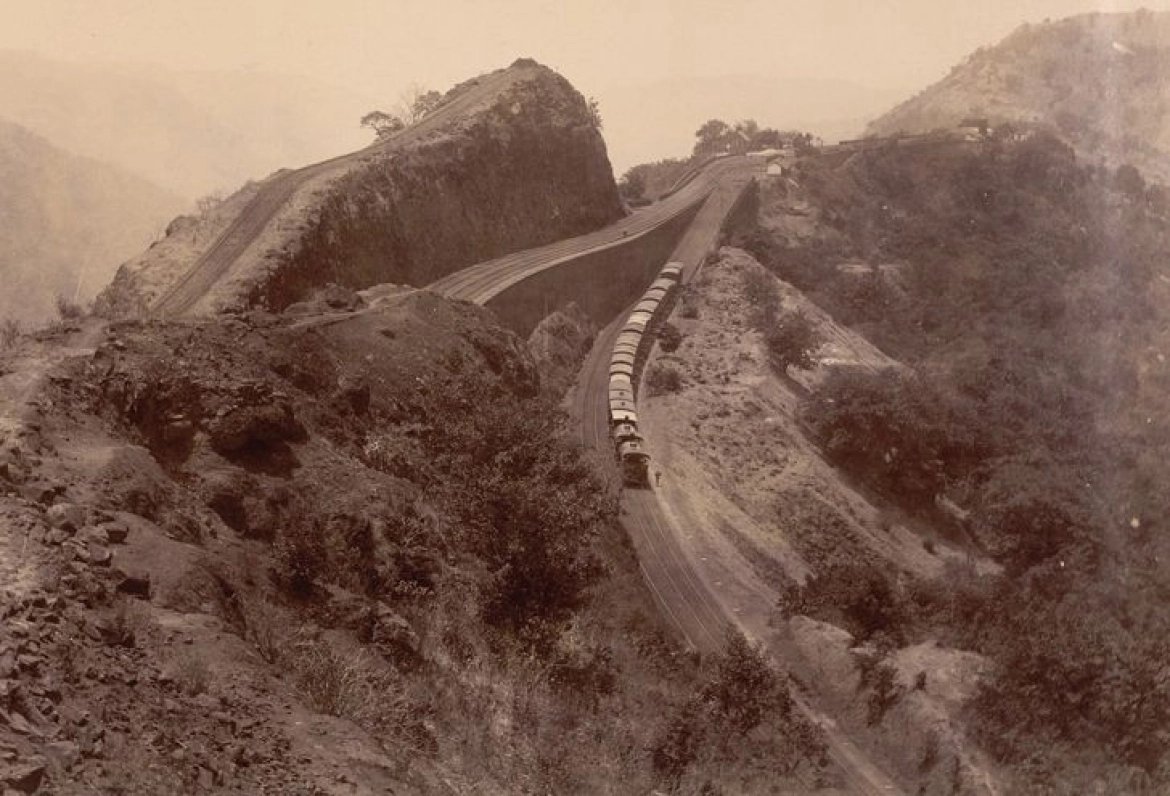MSRDC will demolish a British-era Amrutanjan bridge along the Mumbai-Pune expressway using controlled blasting.
(this & #39;bridge& #39; was part of the original railway line alignment dating back to 1860s. It was rendered obsolete in 1930, with the new alignment) https://www.hindustantimes.com/mumbai-news/lockdown-to-benefit-work-on-mumbai-pune-expressway/story-iu3V62PHneeV78CCMkjxWN.html">https://www.hindustantimes.com/mumbai-ne...
(this & #39;bridge& #39; was part of the original railway line alignment dating back to 1860s. It was rendered obsolete in 1930, with the new alignment) https://www.hindustantimes.com/mumbai-news/lockdown-to-benefit-work-on-mumbai-pune-expressway/story-iu3V62PHneeV78CCMkjxWN.html">https://www.hindustantimes.com/mumbai-ne...
The Bhor Ghat line between Karjat and Khandala was one of the toughest rail engineering projects in the mid 19th century. It took nearly a decade to build and consisted of 25 tunnels and other viaducts, bridges.
The last stretch near Khandala was particularly tough.
The last stretch near Khandala was particularly tough.
The route from present day & #39;Monkey Hill& #39; to & #39;Khandala& #39; would involve a near right angle turn and a long tunnel. This was not possible in 1860s.
Instead, the engineers came up with an innovative solution that involved a & #39;Y turn& #39;, using a & #39;reversing station& #39; for the engine.
Instead, the engineers came up with an innovative solution that involved a & #39;Y turn& #39;, using a & #39;reversing station& #39; for the engine.
The present day & #39;Amrutanjan Bridge& #39; was part of this reversing station alignment (see old photo below). The steam engine had to be flipped 180 deg on a reversing turn-table and then attached to the opp. end of the train.
This added significant time to the journey.
This added significant time to the journey.
In the 1920s, during the electrification of the Mumbai - Pune line, a new 26th tunnel (nearly a km long, and turning at a near right angle) was also built.
This rendered the complex reversing station arrangement obsolete.
This rendered the complex reversing station arrangement obsolete.

 Read on Twitter
Read on Twitter


